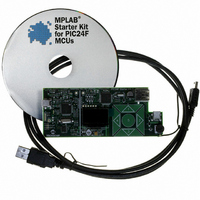DM240011 Microchip Technology, DM240011 Datasheet - Page 34

DM240011
Manufacturer Part Number
DM240011
Description
KIT STARTER MPLAB FOR PIC24F MCU
Manufacturer
Microchip Technology
Series
MPLAB®r
Type
MCUr
Datasheet
1.DM240011.pdf
(42 pages)
Specifications of DM240011
Contents
Board, Cable, CD
Processor To Be Evaluated
PIC24F
Data Bus Width
16 bit
Interface Type
USB
Silicon Manufacturer
Microchip
Core Architecture
PIC
Core Sub-architecture
PIC24
Silicon Core Number
PIC24F
Silicon Family Name
PIC24FJxxGBxxx
Kit Contents
Board Cables CD Docs
Lead Free Status / RoHS Status
Lead free / RoHS Compliant
For Use With/related Products
PIC24F
Lead Free Status / Rohs Status
Lead free / RoHS Compliant
Available stocks
Company
Part Number
Manufacturer
Quantity
Price
Company:
Part Number:
DM240011
Manufacturer:
Microchip Technology
Quantity:
135
Company:
Part Number:
DM240011
Manufacturer:
MICROCHIP
Quantity:
12 000
MPLAB Starter Kit for PIC24F User’s Guide
DS51725A-page 30
D5. Low V
D6. Debugger/Programmer Clock Crystal (Y1): Provides an accurate 12 MHz
D7. 25LC010A Serial EEPROM (U3): Provides nonvolatile parameter storage for
D8. V
D9. System Power LED (D2): When lit, indicates that the starter kit is powered via
D10. Debug LED (D3): When lit, indicates that communication between the starter
5.3.2
The components listed here (in order of their reference tags in Figure 5-3) are the key
components of the application side of the starter kit:
A1. PIC24F256GB106 Microcontroller (U6): This provides the processing power
A2. Tri-Color LED Pads (D6, D10 or D11): One of these locations is populated with
A3. OLED Display (LED1): A 128 x 64 pixel, monochrome organic LED array
A4. Capacitive Touch Pad (S1): This 5-element keypad is an integral part of the
A5. RTCC Crystal (Y2): Provides an accurate 32.768 kHz reference for the micro-
A6. USB A Receptacle (J4): The application uses this receptacle to connect with
A7. Mini-B USB Receptacle (J5): Physically identical to J1, this provides USB con-
A8. Potentiometer (R44): Provides an analog input to the microcontroller for certain
A9. OLED Voltage Boost Circuitry: L3, D5 and Q4 (along with other passive
high-side switching) to the application side components via control by the
PIC18F67J50.
frequency reference for the PIC18F67J50 microcontroller for stable USB
operations in Programming and Debugging modes. The PIC18F67J50 also uses
this to generate a second 12 MHz clock for use by the PIC24FJ256GB106
microcontroller.
the PIC18F67J50.
appropriate connectors and furnished with power to operate the board in
Stand-Alone mode.
the USB.
for the demo applications and application development on the starter kit.
The microcontroller features 256 Kbytes of Flash program memory and
16 Kbytes RAM.
The demo application uses an external 12 MHz signal from the programmer side
as clock source. Custom applications that do not use the USB module may also
use the microcontroller’s on-chip FRC oscillator as a clock source. (USB appli-
cations must use the 12 MHz programmer clock source, as the tolerance of the
FRC oscillator exceeds USB specifications.)
a three-channel (RGB) LED; the choice of the populated site depends on the
availability of components at the time of the board’s assembly. Functionally, the
LEDs at any of these sites are interchangeable.
provides a wide range of graphics and alphanumeric display options.
board’s top layer. The application responds to capacitive changes induced by
direct contact with the user by monitoring each of the touch pad’s elements with
the microcontroller’s integrated CTMU module.
controller’s secondary oscillator. This is used in turn as the time base for the
on-chip Real-Time Clock (RTC).
USB peripherals while operating as an embedded host.
nectivity for the application side when it is functioning as a peripheral device.
demo applications.
components) are connected in a voltage boost topology. This provides the OLED
display with its nominal operating voltage of 13 V
kit and MPLAB IDE has been successfully established.
BUS
and GND Test Points: These unpopulated pads may be equipped with
Application Components
CE
Saturation PNP Transistor Switch (Q1): Provides target power (via
DC
.
© 2008 Microchip Technology Inc.












